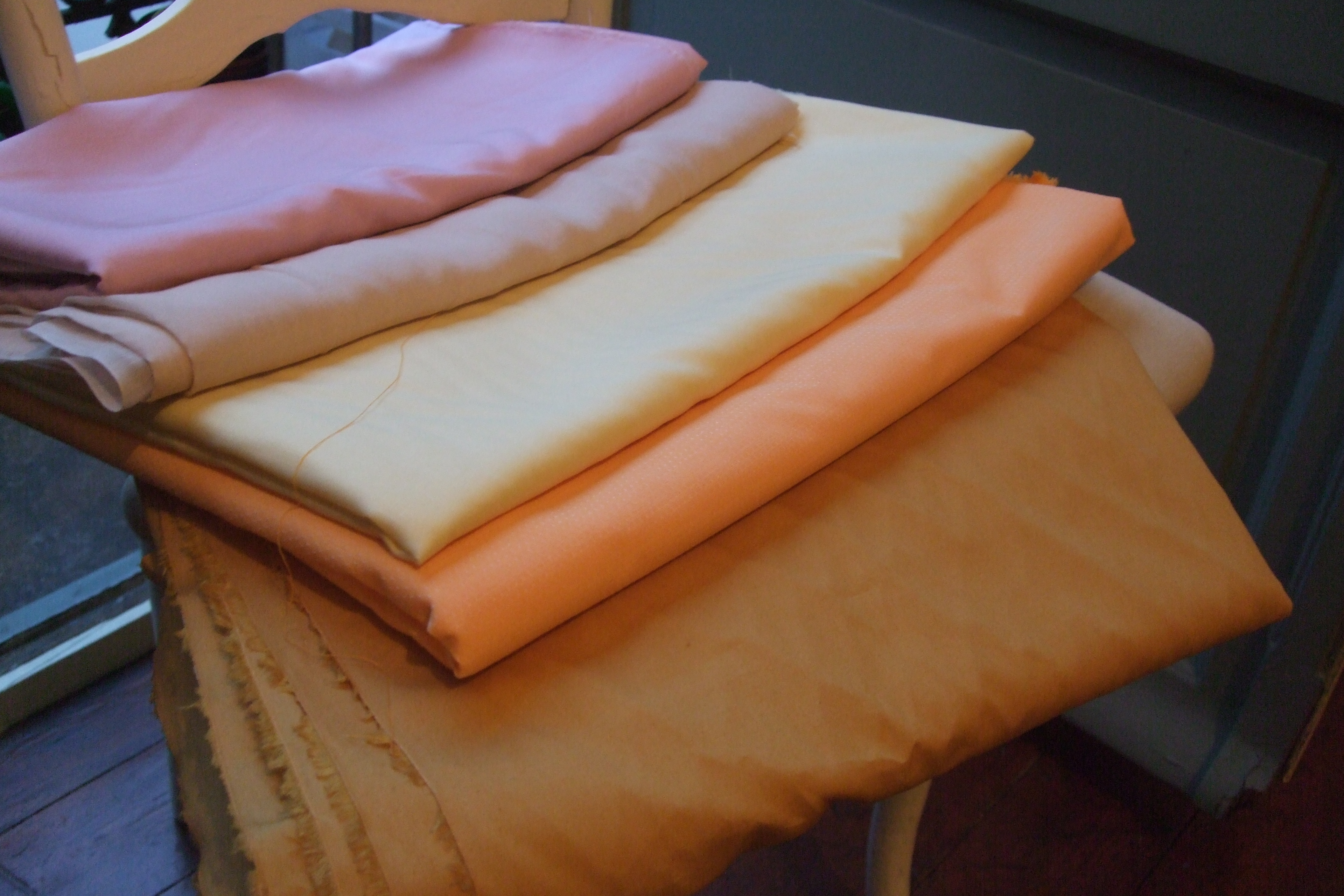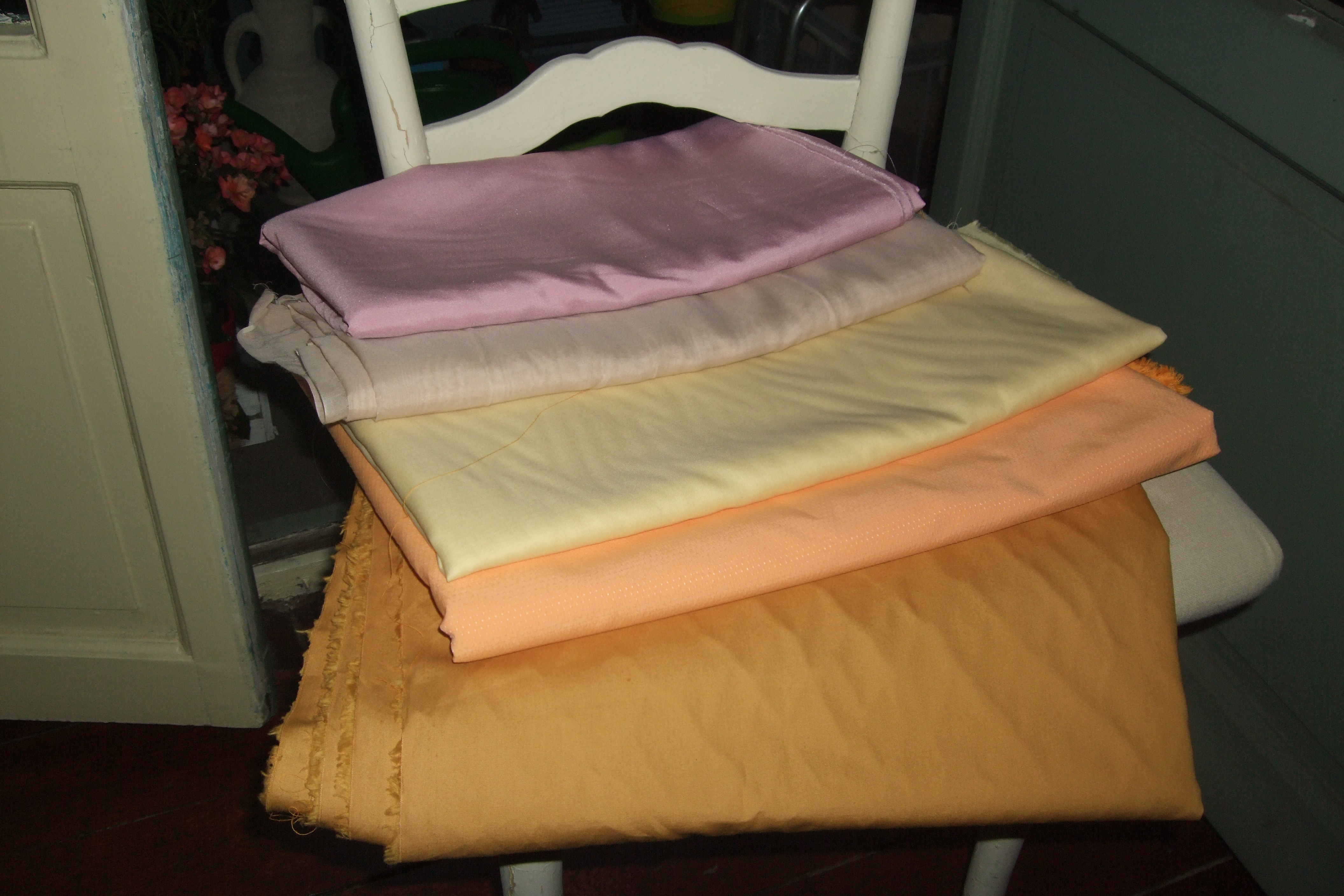Choosing
the right fabric to work with is at times a minefield. All amateur
dressmakers will be familiar with the trauma of using fabric
completely unsuited to the task in hand. And not only is
fabric hunting tricky, as I live in Brussels, on top of being a
fabric dunce, when it comes to heading to one of the many fabric vendors in my adopted city there is the added element of having
to ask all my silly questions in French. There is often a lot of
specialist vocabulary associated with sewing and pattern cutting that
must be learned, and if we have to learn these terms and words in our
native tongue then we'll certainly have to learn them in a second
language!
So I've broken down the fabric fundamentals of woven fabrics as I understand them: woven fabrics are made from a variety of different fibres from either plant, animal or chemical sources (synthetics). The most common fibres are silk (FR : soi), rayon (rayonne), polyester (polyester), cotton (coton), wool (laine), nylon (nylon), and linen (lin). So this information tells us what a fabric is made from, in other words its fibre content. Then we have to think about how it is made: what type of weave has been used? A plain weave, a twill weave (sergé) weave or a satin weave?
Here are some examples of fabrics I've worked with or plan to work with and their corresponding French translation in italics, as well as the fibre they are typically made from in brackets (of course, in the fabric shop you'll encounter many different fabric compositions known as blends (mélanges) made from two or more different fibres, for example 70% cotton and 30% polyester).
Twill weaves:
Denim (cotton) du denim
Tweed (wool) du tweed
Plain weaves:
Lawn (cotton) du linon
Batiste (cotton) de la batiste
Voile (cotton) de la voile
Shirting (cotton) du shirting
Poplin (cotton) de la popeline
Something I found hard to get my head around in the beginning was how two pieces of fabric that were both described as 'light cottons' for example could feel and act so differently. This is of course down to different weights and textures and drapes. It is worth putting some time in exploring how different fabrics feel and behave. Like most things with dressmaking the best way to learn is to try things out and see what works!
Here are some fabrics I bought today at Le Chien Vert and their composition information. It was fun to go to the fabric shop after having done a bit of research as I felt more confident that I knew what I was looking for and what kinds of things to avoid.

So I've broken down the fabric fundamentals of woven fabrics as I understand them: woven fabrics are made from a variety of different fibres from either plant, animal or chemical sources (synthetics). The most common fibres are silk (FR : soi), rayon (rayonne), polyester (polyester), cotton (coton), wool (laine), nylon (nylon), and linen (lin). So this information tells us what a fabric is made from, in other words its fibre content. Then we have to think about how it is made: what type of weave has been used? A plain weave, a twill weave (sergé) weave or a satin weave?
Here are some examples of fabrics I've worked with or plan to work with and their corresponding French translation in italics, as well as the fibre they are typically made from in brackets (of course, in the fabric shop you'll encounter many different fabric compositions known as blends (mélanges) made from two or more different fibres, for example 70% cotton and 30% polyester).
Twill weaves:
Denim (cotton) du denim
Tweed (wool) du tweed
Plain weaves:
Lawn (cotton) du linon
Batiste (cotton) de la batiste
Voile (cotton) de la voile
Shirting (cotton) du shirting
Poplin (cotton) de la popeline
Something I found hard to get my head around in the beginning was how two pieces of fabric that were both described as 'light cottons' for example could feel and act so differently. This is of course down to different weights and textures and drapes. It is worth putting some time in exploring how different fabrics feel and behave. Like most things with dressmaking the best way to learn is to try things out and see what works!
Here are some fabrics I bought today at Le Chien Vert and their composition information. It was fun to go to the fabric shop after having done a bit of research as I felt more confident that I knew what I was looking for and what kinds of things to avoid.

Starting from the back of the chair:
A pink lightweight cotton-silk blend that I plan to use as a lining.
A tan lightweight cotton that I also plan to use as a lining.
A yellow lightweight cotton that is also destined to be a lining.
A salmon pink cotton poplin, with a raised textured ridge effect.
A mustard yellow cotton poplin.

But perhaps I shouldn't get too obsessed with the fact I'm not an expert in fabric theory. That said, this book will remain on my Christmas list.
P.S. In a future post I'll put together some English-French translations of other useful terms and phrases that commonly appear in patterns. Then I'll work on my Dutch* sewing vocabulary! So far all I know is that the verb to sew is naaien and that fabric shop translates as stoffenwinkel.
*For those not in the know, in a nutshell Belgium is made up of three administrative regions, in the south there is Wallonia, which is made up of a predominantly French speaking community and a smaller German speaking one, and in the north there is Dutch speaking Flanders. The third region is the Brussels Capital Region which geographically speaking is a bilingual (French-Dutch) enclave situated in Flanders. There is a lot of debate surrounding the 'language question' and as such it is one of the main sources of fodder for the Belgian media. Yes, it is confusing!


No comments :
Post a Comment